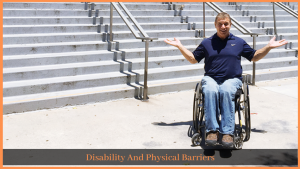Technology may facilitate access to education for children with disabilities, integrate with peers, and interact with their families.
Technology advances may also seem intimidating. Smartphones, smartwatches, laptops, Bluetooth, wristbands for the heart monitor, the list goes on. Quick technical advances, however, are more than just gadgets; modern technologies help children with disabilities to access education, connect with peers and engage with their families in ways that were once considered impossible.
Research indicates that improved support enhances outcomes for children with disabilities during the early years of childhood and technology can play a significant role. As well as advanced devices and mainstream laptops, smartphones, speech-generating devices, turn access and environmental controls, assistive technology can include equipment to increase home and general mobility.
Curiously, not a wide range of assistive innovation is high tech. Any computer, equipment or system that helps a person with disabilities work through their difficulties so that they can learn, interact or improve independence is communication and assistive technology. To promote communication, visual communication boards are a low-cost tool that shows images, icons, words or phrases, or a combination of all three.
For little ones, adapted or adaptive toys are a wonderful creation, catering for all phases of childhood development. All kids learn through play, but many kids with disabilities depend on play support. Adaptive toys may provide freedom in play for children, a feeling of control over their world, construction of gross and fine motor skills and greater interaction with their peers in play.
For example, it is better to consider how a child plays with toys as a representation of where they are growing, according to Special Needs Toys Australia:
- Exploring (examination of the toy through touch, sight, and sound)
- Finding (realisation of the toys uses)
- Interaction (using the toy creatively and imaginatively )
Communication and assistive devices also contribute to a more supportive atmosphere for school-aged children in the classroom. Innovations are helping kids to transition into conventional schools with listening, math, organisation and memory, reading and writing challenges. They include:
- Audio players and recorders help kids listen to the sentences when reading them on the web.
- Alternatives for keyboards – have personalised overlays for a typical keyboard
- Optical character recognition systems allow students to scan written material via a speech reading system through a computer or handheld machine that is then read aloud.
Some technological innovation, such as the web-enabled coffee cup, makes you wonder where (and why) technology is going. Innovations in communication and assistive technology, however, provide children with disabilities with new ways of learning through play, building motor skills and engaging with peers, opening up exciting possibilities for children, their families and the whole community.



